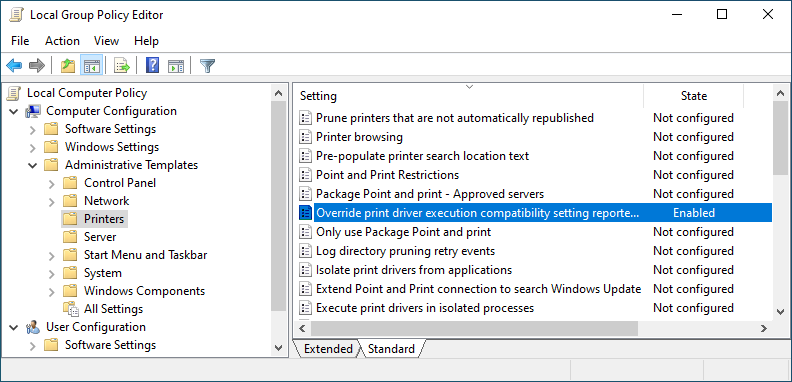Contents
Driver Isolation Mode in Windows
Last updated September 30, 2025
Contents
What is the Driver Isolation Mode in Windows?
In the olden days of yore, a single flakey print driver on a Windows server had the potential to take down the entire Print Spooler service, causing chaos and mayhem. In those times the only way to prevent one buggy driver from crashing the Windows Print Spooler service was to only run it on a separate print server.
Thankfully nowadays you prevent situations like this by managing the Driver Isolation settings in Windows. When you set this to ‘Shared’ or ‘Isolated’, print drivers will run in a separate process than the spooler which improves system stability.
These are the three options:
- None - in this mode the Print Spooler and drivers share a process, called spoolsv.exe. One bad driver can crash everything. We don’t recommend this.
- Shared - which means Run the driver in a process that is shared with other printer drivers but is separate from the spooler process. In this mode, all the drivers run in a single process, called
printisolationhost.exe, which is separate from the Print Spooler. This is the most efficient option. - Isolated - which means Run the driver in a process that is separate from the spooler process and is not shared with other printer drivers. In this mode each individual driver will run in its own
printisolationhost.exeprocess. It is best to enable this option when you believe you have encountered a buggy print driver.
Choosing Shared or Isolated should reduce the likelihood of a spooler crash happening on your server. None is the riskiest choice because the print spooler may crash if the driver stops working.
Change the driver isolation mode for an individual driver
- Open Print Management by pressing Windows key + R, then type printmanagement.msc and hit the enter key.
- Navigate to the Drivers section, then right-click on the driver you want to manage.
- Hover over Set Driver Isolation… then choose one of the options.

Change this setting to Shared for an entire print server
- On the print server, open the Group Policy Editor, called gpedit.msc.
- Navigate to Computer Configuration → Administrative Templates → Printers.
- Right click on Override print driver execution compatibility setting reported by print driver and set this to Enabled.
- Click OK and then exit. You may need to restart the print server for the changes to apply.

Still have questions?
Let us know! We love chatting about what’s going on under the hood. Feel free to leave a comment below or visit our Support Portal for further assistance.
main_category: categories: Troubleshooting Articles, Print Queues
Category: Reference Articles
Subcategory: Print Queues






Comments